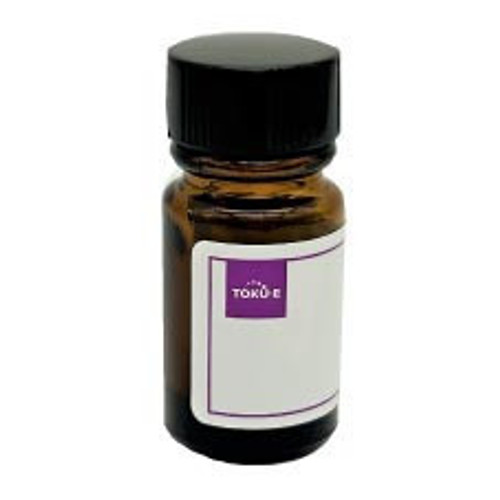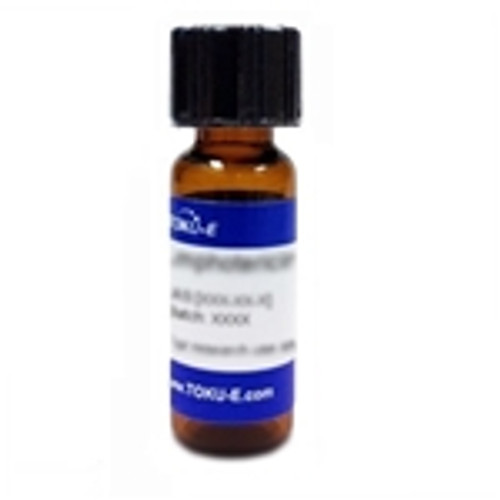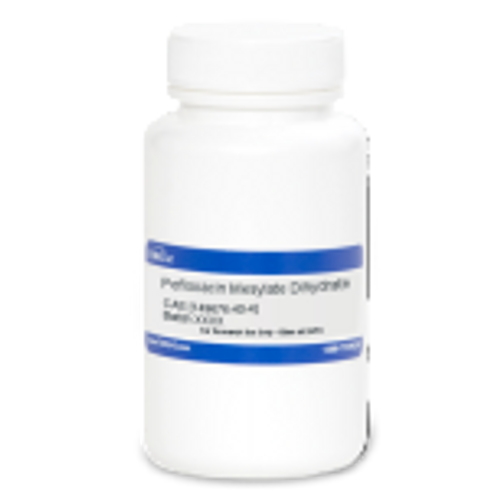Trovafloxacin Mesylate is a broad-spectrum fluoroquinolone antibiotic. It was developed for immunology research (Pfizer). It can inhibit both Gram-positive and Gram-negative bacteria, and anaerobic organisms. The compound inhibits activity of DNA gyrase and topoisomerase, preventing the uncoiling of supercoiled DNA in various bacteria. It can inhibit pannexin1 (Panx1).
Trovafloxacin Mesylate is soluble in DMSO.
| Mechanism of Action | Trovafloxacin exerts its antibiotic activity by inhibiting the uncoiling of supercoiled DNA in various bacteria by blocking the activity of DNA gyrase and topoisomerase IV. DNA gyrase inhibition is via the formation of a stable quinone-DNA complex. |
| Spectrum | Trovafloxacin Mesylate has broad-spectrum activity against Gram-positive and Gram-negative bacteria, but has more activity against Gram-positive bacteria. It also has activity against anaerobic organisms. |
| Microbiology Applications |
Trovafloxacin MICs at which 90% of isolates are inhibited, were evaluated for 55 isolates of pneumococci and found to be 0.125 ug/ml. Resistance to fluoroquinolones in S. pneumoniae occurs in vitro at low frequency, and involves sequential mutations in topoisomerase IV and DNA gyrase (Gootz et al, 1996). A small-molecule screen found that Trovafloxacin is a novel PANX1 inhibitor. PANX1 channels nucletide signals from apoptotic cells to attract phagocytes. When comparing different quinolone antibiotics, certain structural features may contribute to PANx1 blockade, so re-engineering quinolones could help discover new antibacterial agents (Poon et al, 2014). |
| Eukaryotic Cell Culture Applications |
Trovafloxacin Mesylate can be used in toxicity assays in 2D hepatocyte cultures. It can also be used to investigate apoptosis. It induced apoptosis and increased leakage of lactate dehydrogenase (LDH) in HepG2 cells. It also caused a higher increase in transcription of A20 and IκBα in HepG2 cells. Trovafloxacin prolonged the first translocation of NF-κB induced by Trovafloxacin in vitro, which provides new insights into the mechanism of hepatotoxicity between mouse and human models. Toxicity models provide a view of pathways for idiosyncratic drug-induced liver injury (IDILI)(Giustarini et al, 2020). |
| Molecular Formula | C20H15F3N4O3 · CH3SO3H |
| References |
Giustarini G et al (2020) The hepatotoxic fluoroquinolone trovafloxacin disturbs TNF- and LPS-induced p65 nuclear translocation in vivo and in vitro. Toxicol. Appl. Pharmacol. 391:114915 PMID 32035082 Gootz TD, et al. Activity of the new fluoroquinolone trovafloxacin (CP-99,219) against DNA gyrase and topoisomerase IV mutants of Streptococcus pneumoniae selected in vitro. Antimicrob. Agents Chemother. 40(12):2691-2697 PMID 9124824 Poon IK et al (2014) Unexpected link between an antibiotic, pannexin channels and apoptosis. Nature. 507(7492):329-334 PMID 24646995 |







